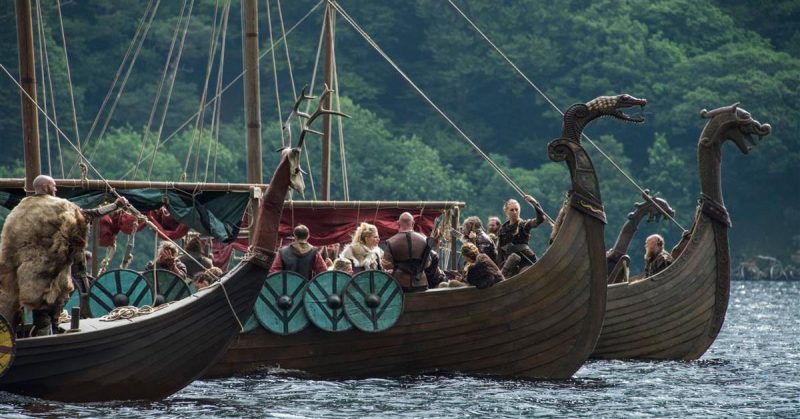War History Online proudly presents this Guest Piece from Justin Pollard, VIKINGS History Consultant
“Behold, a people shall come from the north…..They shall hold the bow and the lance: they are cruel, and will not shew mercy: their voice shall roar like the sea….” – Book of Jeremiah
When attempting to reconstruct Viking battles from the 9th-century film crews are faced with a number of problems. Firstly there’s the sources. There are simply no contemporary Viking sources of this date and so we’re forced to look to the accounts of those people they fought, which are, not surprisingly, somewhat biased against them. Beyond that we have the archaeology which can certainly help when putting together the technological suite of weaponry but cannot tell us much about the tactics of battle. It is true that experimental archaeologists can test weapons and suggest the best usage parameters but an archaeologist with a reconstructed shield is very long way away from a real Viking battlefield.
But there are other considerations for a filmmaker too. We cannot forensically reconstruct the past and we know that. We simply don’t have the level of data needed to do so and even if we did, we could never stop being 21st-century humans to place ourselves fully in those Viking shoes. But beyond that we have to ask if we even want to try to completely reconstruct the past? A TV drama must be compelling first and foremost. It must speak to a decidedly modern audience and make them want to keep watching and hopefully come back for more. History, even the little we do know about it, does not always provide that.
When we reconstruct a Viking battle we are never trying simply to recreate a piece of history, we’re trying to tell our story and do it in a way which is both exciting and understandable to the audience and furthers the story we are telling. We’re we to witness a real Viking battle as documentary filmmakers rather than drama crews, would we understand what’s happening? Looking at modern news footage from war zones suggests it’s extremely confusing to be placed in a real war. It can also be very boring, with long periods in which nothing happens at all.
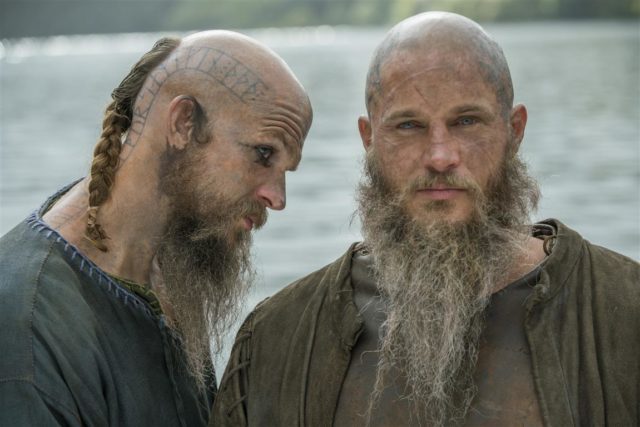
Our audience has to know what’s happening and so battles are simplified, the sides more clearly differentiated that would probably be the case particularly at this date, and the tactics and flow of battle choreographed to enable our audience to follow the action. Even beyond this our stunt crews have to produce compelling action which is safe to film and augmented with such CGI as the budget can manage.
Having said all that, undoubtedly the best place to start in filming a Viking battle is with whatever sources we do have. First hand accounts contain those little descriptions, those nuanced moments that no writer could simply think up. Rather than look to overall battle tactics it’s often from these moments that we build sequences. It also allows us to keep the focus tightly on the heroes of our story rather than giving a wargamers overview of the battlefield. This enables us to get close in to the action and to keep showing our audience something new. After five seasons of Vikings we’ve had a lot of battles and audiences don’t want to see the same thing again and again.
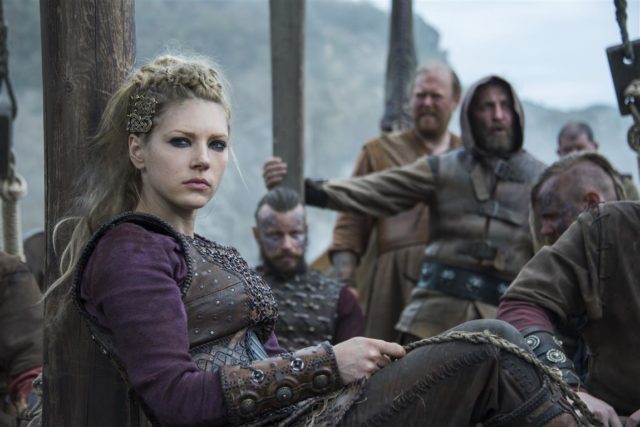
In Season 5 we will return to Wessex but start to see the kingdom respond to Viking threats as indeed Alfred’s kingdom did historically adapt its standard tactics to begin to deal with this new threat. For this, we have mined the information available in Asser’s contemporary biography of Alfred the Great, as well as European sources such as the Annals of St. Bertin and Annals of Fulda and, of course, the Anglo-Saxon Chronicle. The Bella parisiacae Urbis of Abbo of Saint-Germain-des-Prés, which we used extensively for the siege of Paris also provided information on Viking siege engines and tactics.
We have been keen to get over the point that Viking attacks, indeed their whole philosophy, were very alien to the practices of Christian Europe, and hence terrifying. These were undoubtedly terrorists in the eyes on the monastic Chroniclers of the 9th century. The threat posed by the Vikings was new in both its type and its scale. Even amongst the martial Anglo-Saxon states, warfare had developed particular rules. Armies attacked other armies; soldiers fought other soldiers and fighting was reserved for the summer when food supplies were plentiful and the fyrd (the peasant levy that made up much of the army) was not required on the land.
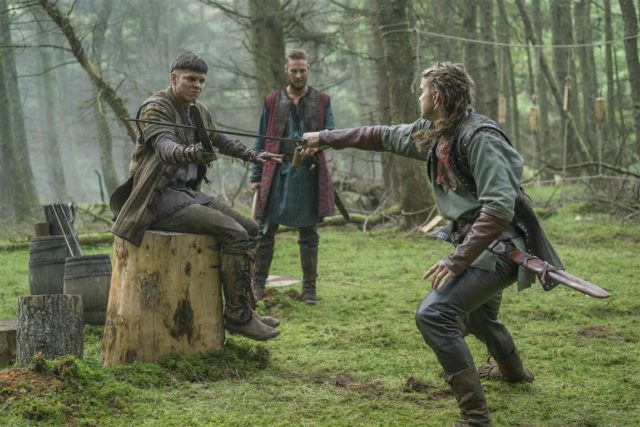
Truces and treaties were backed by religious sanctions, the swearing of Christian oaths usually being enough to ensure compliance in what was then an overwhelmingly Christian society. The Vikings neither understood nor cared for any of these rules of engagement. They operated guerrilla armies, and were happy to attack rich undefended sites such as monasteries and slaughter the occupants who, to them, simply seemed ludicrously unprepared. Caught in a tight corner they would swear Christian or pagan oaths (and even convert to Christianity, sometimes repeatedly) but just as easily break that oath as soon as their situation improved, unbothered by the threats of supernatural retribution.
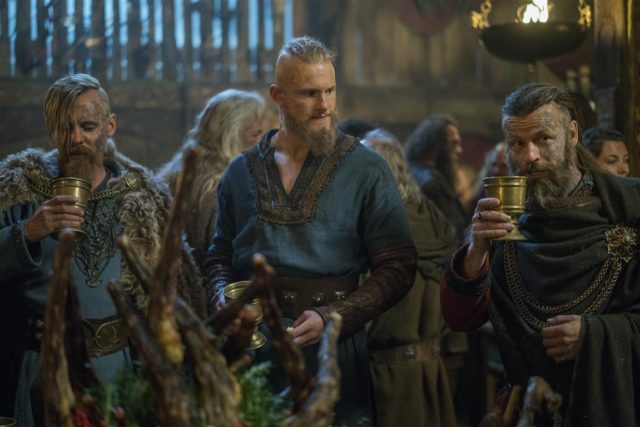
Yet the Vikings were not simply the demons portrayed in the Anglo-Saxon chronicle. Their form of warfare was not only new but brilliantly effective against the old Christian states of Europe in three key areas. First, they moved quickly, thanks to ocean- and river-going ships, which could carry invasion forces across the open sea and could both infiltrate and exfiltrate raiding parties deep inland without being noticed. For them, the rivers of England were not boundaries between states (as Anglo-Saxons tended to see them), but highways. Second, they fought practically, hitting hard but seeing no dishonour in then rapidly retreating before a response could be mounted. Third, and perhaps most important of all, they had an acute understanding of the power politics behind the fault lines in Anglo-Saxon society, playing rival aristocratic families off against each other and allowing internecine warfare to cripple their targets before simply stepping into the bloody void left behind.
Over and above the particular choreography of battle, it is these ideas of the whole Viking approach to warfare that we are trying to describe, along with how those people they fought in western Europe, and further afield in Season 5 (without wishing to give away spoilers) responded to this. The Vikings that burst onto the scene in Season 1 will no longer have quite so much there own way in Season 5 as Christian Europe and Muslim North Africa adapts to the threat. The Sons of Ragnar really will have to earn their place in the Sagas.
VIKINGS Season 4 Volume II will be available on DVD October 3rd from 20th Century Fox Home Entertainment and MGM
